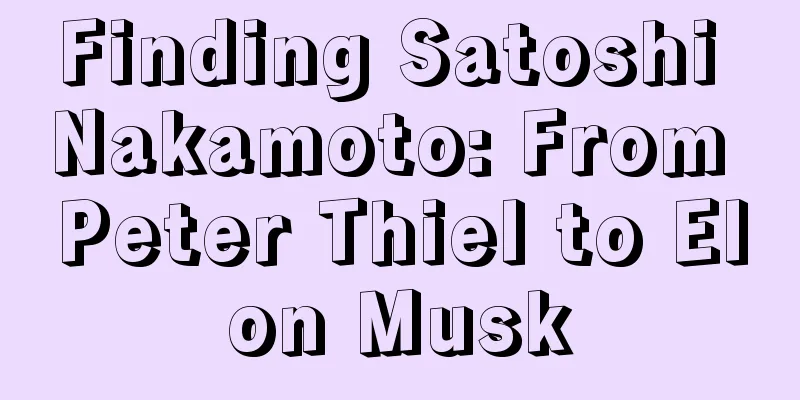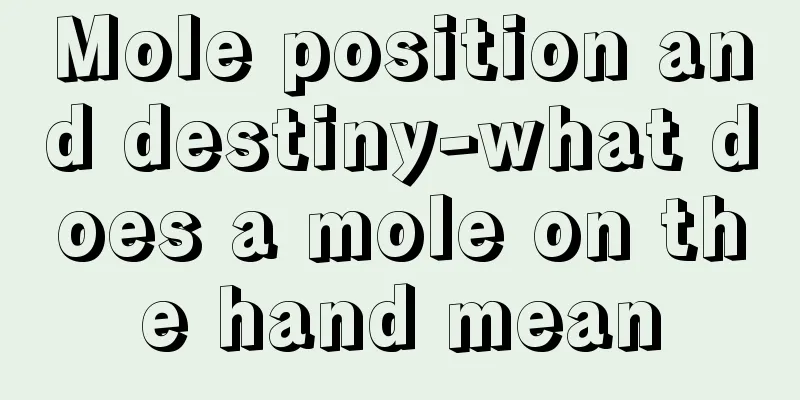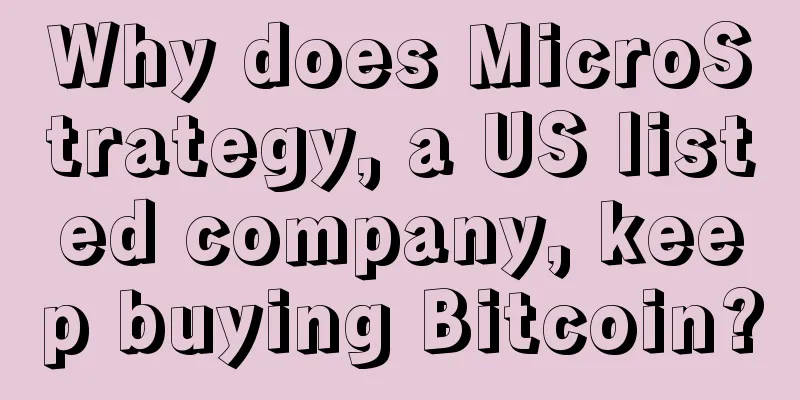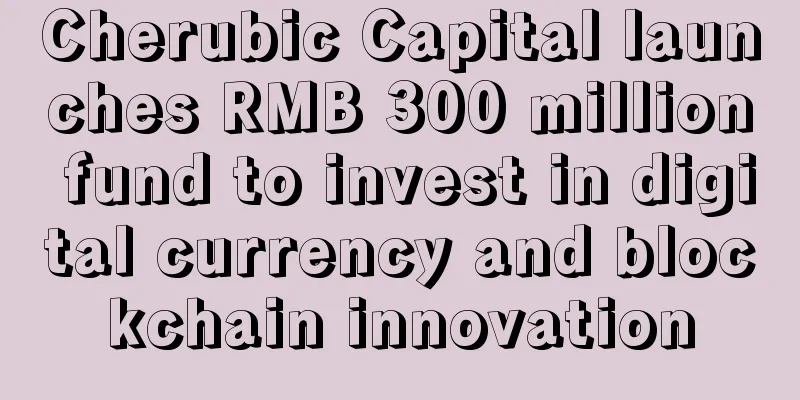Finding Satoshi Nakamoto: From Peter Thiel to Elon Musk

|
Two years ago, billionaire entrepreneur Peter Thiel hinted that he had met an individual or group using the pseudonym Satoshi Nakamoto. Peter Thiel came close to claiming to know the exact identity of Satoshi Nakamoto , saying he met an individual involved in the creation of Bitcoin at a financial cryptography conference in Anguilla 23 years ago. These rumors have resurfaced because Peter Thiel's colleague Balaji Srinivasan recently predicted that Bitcoin will be worth $1 million. Peter Thiel probably did know Satoshi Nakamoto. After all, Peter Thiel and Satoshi Nakamoto had the same social circles: working with Elon Musk, meeting the founder of E-Gold, being a member of the PayPal mafia, and befriending Srinivasan and Vitalik Buterin, the founder of the first Bitcoin magazine. But how deep do these connections go? Does Peter Thiel really know the true identity of Satoshi Nakamoto? Peter Thiel and E-Gold At a conference in Miami in 2021, Peter Thiel told the audience that he had pondered the identity of Satoshi Nakamoto. He said: "My theory is that Satoshi was on the beach in Anguilla. I met them on the beach in Anguilla in February 2000. We started a revolution against central banks... We were going to make PayPal interoperable with E-Gold and blow up all the central banks." Peter Thiel met with the founders of E-Gold at a conference held on February 21-24, 2000. At the time, he was still working for PayPal, which he co-founded, and expressed interest in integrating E-Gold with PayPal. E-Gold ended in 2007 when the U.S. Department of Justice shut down the project and arrested its founders for unregistered money transmission. E-Gold’s failure and forfeiture lasted more than seven years. Regardless, the Financial Cryptography Conference is one of the oldest conferences among cryptographers. Researchers at this conference provided many of the ideas for Bitcoin to Satoshi Nakamoto, publishing papers like "Electronic Cash – Technology Will Denationalise Money" or "Efficient Electronic Cash with Restricted Privacy". Peter Thiel believes that Satoshi learned some lessons from the failure of E-Gold on that beach. For example, Peter Thiel believes that Satoshi learned the importance of anonymity (to this day, Satoshi is undoubtedly the most anonymous billionaire in the world). In addition, Peter Thiel believes that Satoshi Nakamoto learned how to prevent companies from being seized or forced to close by the government. Satoshi Nakamoto carefully chose MIT's open source license as the authorization of Bitcoin and never established a company, laying the foundation for the long-term success of Bitcoin. Peter Thiel and the PayPal Mafia Peter Thiel’s relationship with Bitcoin dates back to the 1990s, when cryptographers became upset with banks. At the time, Peter Thiel and most of the dozens of members of the PayPal Mafia were working on various fintech startups. Most of the people in Peter Thiel’s circle of friends had made multi-generational wealth through internet startups and IPOs in the early 20th century. For example, Elon Musk, a member of the PayPal Mafia, is occasionally referred to as a co-founder of PayPal. Specifically, Musk co-founded X.com, which was originally intended to be an online bank. Eventually, X.com merged with Peter Thiel's Confinity Inc., a mobile payments and crypto technology company. Confinity launched PayPal in 1999, a year before merging with X.com in 2000. Ebay bought PayPal in 2002. Musk and Peter Thiel took their share of the payouts and presumably parted ways. Peter Thiel went into venture capital, while Musk invested his money in Tesla, SolarCity (later acquired by Tesla), and SpaceX. However, they both retained their interest in digital payments. In 2021, Musk directed Tesla to buy Bitcoin and accept it as a form of payment for its electric vehicles. As the richest man in the world at the time, these moves earned Bitcoin significant media coverage. Of course, Musk quickly abandoned Bitcoin in favor of various altcoins, including his pet project Dogecoin . Musk’s criticism of Bitcoin’s energy use was one of the contributing factors to Michael Saylor’s creation of the Bitcoin Mining Council to refute false and misleading claims about Bitcoin’s environmental impact. A former SpaceX intern fanned the rumor that Peter Thiel might know Satoshi Nakamoto by suggesting that Musk himself created Bitcoin. The intern cited similarities between Nakamoto and Musk’s writing styles, including cruft words and phrases, as well as some circumstantial evidence. For example, the software for Musk's X.com and Satoshi Nakamoto's Bitcoin are both "monolithic software" written in the C++ programming language. But in any case, Musk denies that he is Satoshi Nakamoto. Balaji Srinivasan Bet on Satoshi Nakamoto to Become a Trillionaire Although not technically a member of the PayPal Mafia, Balaji Srinivasan is friends with many of its members. Balaji Srinivasan served as the CTO of Coinbase and a general partner of Andreessen Horowitz (a16z), an influential Silicon Valley venture capital firm. He has also invested in digital assets such as Bitcoin, Chainlink, Ethereum, and Solana . Recently, Balaji Srinivasan has been in the news again for making a big bet that the price of one Bitcoin could soar to $1 million. While it may seem outrageous, many people take his prediction seriously out of respect for his prescient warnings about COVID-19 as early as January 2020. Balaji Srinivasan is certainly not the first to make bold predictions about the price of Bitcoin. John McAfee once thought it could go up to $500,000 by 2020, while James Altucher called for $1 million the same year. Both lost those bets. Of course, Balaji Srinivasan’s prediction has more to do with the overinflation of the U.S. dollar than with the rally of Bitcoin alone. He also chose a round number to facilitate media coverage. The famous Satoshi Nakamoto mined about 1 million Bitcoins. If the price of one Bitcoin rises to $1 million, Satoshi Nakamoto will become the world’s first trillionaire. Of course, that’s assuming Satoshi Nakamoto is a person. Balaji Srinivasan's bet could be just another publicity stunt. But one wonders if he knows something the rest of us don't. Balaji Srinivasan and Peter Thiel Balaji Srinivasan cited Peter Thiel, a long-time investor with similar interests. The Peter Thiel Fellowship awarded $100,000 to Ethereum’s Vitalik Buterin in 2014, a move Balaji Srinivasan defended in a 2022 tweet. Vitalik Buterin is the founder of the first and most popular print magazine about Bitcoin, aptly named Bitcoin Magazine. Today, the magazine is owned and operated by Bitcoin Inc. Balaji Srinivasan praised Vitalik Buterin as one of the few people who was successful without a college degree. When asked about Peter Thiel's interest in buying controlling stakes in companies he invested in, Balaji Srinivasan said: "It's complicated. He wants to turn things around." Balaji Srinivasan seems to think that Peter Thiel admires the United States of decades ago, when it was still capable of doing big things, like putting people on the moon. The problem? The last people left the moon in December 1972, and no one has returned since. Many of Peter Thiel's core members work for space travel companies, including Musk. In Peter Thiel's view, the failure of American astronauts to return to the moon and continue to push toward more distant worlds such as Mars may symbolize the United States' inability to boldly tackle large projects "not because it's easy, but because it's hard." Balaji Srinivasan is making an extremely negative bet on the resilience of the dollar and, by proxy, its government and economy. He grudgingly allows that the US could correct its course. However, he cites a number of problems, including the way Congress passes laws “tested in production” and limited ways to respond to rapid challenges to the dollar’s hegemony. Beyond their disdain for the U.S. banking system, Balaji Srinivasan and Peter Thiel can bond over common interests, such as seafaring. Balaji Srinivasan discusses island voyages in a chapter of his book Network Nation. Peter Thiel provided $1.7 million in funding for the Seafaring Institute, but then admitted that creating a financially and ecologically sustainable seafaring is "not very feasible." The two seemed to agree on another thing: The Bitcoin community needs a place where it can thrive. Crackdowns on Bitcoin force participants to stop contributing or jump to other countries. As China's on-again, off-again relationship with digital assets shows, Bitcoin mining safety still depends largely on the government's willingness to tolerate it. According to Balaji Srinivasan and Peter Thiel’s reasoning, much of this problem could be solved if there was a sovereign nation behind Bitcoin, and that nation probably wouldn’t be El Salvador. Peter Thiel may have tempered his enthusiasm for seasteading, but that doesn’t mean he’s given up on the idea of evolving a community into a sovereign nation of like-minded people. As Peter Thiel told Business Insider: "One of the key concepts [of building a new nation] is to start with the cloud and then the land, but not never without the land, starting with an online community and then materializing it into the physical world." BitNation and various other projects have attempted to form virtual nations recognized by the United Nations. All of these have failed. At this point, Peter Thiel probably understands that a sovereign nation will not last if it has no territory in the physical world. Peter Thiel and the banking system Bitcoin is a completely new financial system that many hope will one day replace the traditional banking system. In fact, Satoshi Nakamoto believed that the problems in the financial industry were the main reason they created a peer-to-peer payment protocol that bypassed trusted intermediaries entirely. Satoshi Nakamoto engraved a news headline about a bank bailout during the Great Depression into Bitcoin’s genesis block: “Chancellor on brink of second bailout for banks” The Times 3 January 2009 History tends to repeat itself. This year's government rescue of Silicon Valley Bank (SVB), Credit Suisse (CS), Signature Bank (SSB) and other banks differed from 2009 in only a few minor details. Unsurprisingly, early Bitcoin community members like the PayPal Mafia were quick to avoid this year’s bank runs. Peter Thiel’s Founders Fund prophetically moved billions of dollars out of SVB days before the catastrophic bank run. Founders Fund executives and their portfolio companies wired funds to safety just before the FDIC coordinated a rescue along with the U.S. Treasury and the Federal Reserve. Then, other companies rushed to submit withdrawal requests after they expressed concerns about the venture-friendly bank. Eventually, the bank ran out of cash. In what was the second-largest bank failure in the U.S., the government deemed SVB systemically important and bailed out depositors as a one-time courtesy that left everyone compensated. The unofficial story is that Founders Fund deliberately exacerbated the poor condition of the bank because of a secret vendetta against SVB. Peter Thiel denied that he had any complaints about SVB's banking operations and reiterated that he retained $50 million of his personal wealth at the bank. Maybe that was genuine; maybe it was his alibi. Given that the FDIC caps deposit insurance at $250,000 per bank account, that $50 million was a vote of confidence in the bank's ability to remain solvent and would prevent a deeper investigation into his banking relationships. Did Peter Thiel know Satoshi Nakamoto? Peter Thiel may have known Satoshi Nakamoto, or at least moved in the same social circles as Satoshi after co-founding PayPal. Peter Thiel worked with Musk, knew the founder of E-Gold, was a member of the PayPal mafia, and befriended Balaji Srinivasan and Vitalik Buterin, the founder of the first Bitcoin magazine. Some people don't believe Peter Thiel's claims at all. Others point to reports that Peter Thiel sold his Bitcoin. Whether or not he still owns a lot of Bitcoin now, he is certainly part of the early financial cryptography community. He also continues to criticize banks; at the 2022 Miami Bitcoin Conference, he very publicly tore up a $100 bill while bashing the banking system while describing his distrust of the dollar. In Peter Thiel’s highly critical take on traditional finance, he called Buffett part of “aging finance”: Buffett refuses to invest in Bitcoin and has a history of bailing out big banks. |
<<: The US government is selling
>>: Bitcoin bulls encounter resistance, sideways consolidation continues at $28,000
Recommend
Ethereum miners’ transaction fee income exceeds block rewards by 3 times, and some blocks earn more than 10 ETH
According to BlockBeats, according to OKLink, Eth...
EdgeVerve blockchain framework, blockchain service product launched by Indian IT giant Infosys for banks
Today, at the Infosys conference in San Francisco...
The "popular king" of the cryptocurrency circle NFT today takes stock of the "debut history" and security issues of this "popular demon star"
NFTs are still going wild, and fans are eager to ...
Filecoin's economic model is officially released, introducing network benchmarks, data verification, and committed capacity.
Source: Compiled by IPFS Force Zone Original link...
What is a water type person? How do water type people look in physiognomy?
Water-type people have straight bones, strong mus...
Bitcoin hit $53,000 before plummeting, analysts say there is still "the last retracement before halving"
On Tuesday, Bitcoin fell again, from an intraday ...
Palmistry: What happens if the love line is broken?
Palmistry: What happens if the love line is broke...
What does the chuan character pattern mean in face reading? Is the chuan character pattern a good sign for your fate?
The face of the word "chuan" In fact, m...
The fate of a woman with a gap in her front teeth
In daily life, everyone’s front teeth don’t mean ...
The difference between the physiognomy of the rich and the high officials, analysis of the physiognomy of the officials
Whether being a rich man or a senior executive is...
Where does the high income from DeFi mining come from? Is it sustainable?
Original title: "Analysis | Where does the h...
What are the facial features of rich peach blossom?
Everyone is special, and everyone's face is d...
In an abandoned air-raid shelter, a "power hog" hid 55 mining machines and stole electricity for "mining"
In recent years, as the price of Bitcoin has cont...
Facial features of a lucky wife
In physiognomy, what kind of women are blessed? (...
Is the love fortune good for people with forked love lines on their palms?
1. If the love line on your hand is forked and th...









